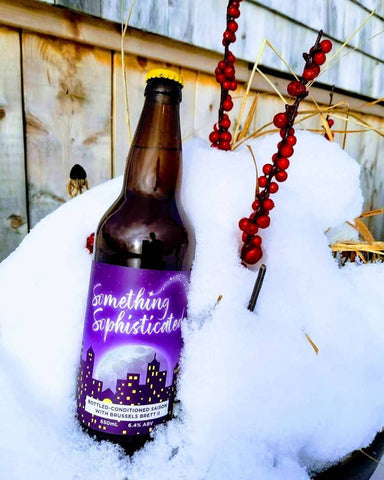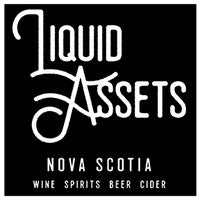Waiter There's a Funk in My Beer

Ours is a curious industry. What can be a detrimental threat to winemakers is embraced by brewers. Someone's waste product is the base for someone else's award-winning product.
Let's look at Brettanomyces, (Bre-TAN-o-My-cees) a non-spore forming yeast, the name of which literally means British Fungus. A small amount in wine (strains are often moved about by every genetics student's friend, the Drosophila fruit fly) can lend an interesting note, but overall, Brett in wine is considered to cause faults in the wine such as metallic tastes or off-putting aromas. But in brewing beer, especially Belgian, Farmhouse, Sours and Saison styles, Brett can lead to flavours like pineapple, citrus, strawberry, cloves, guava, horse-blanket (yes, horse-blanket) and a je ne sais quois funk that can be a true taste delight.
Some Brett-fermented beers are made fairly quickly, others are well-suited to barrel ageing. Just like any type of beer, you need to experiment with flavour profiles until you find the ones that suit your fancy. (I don't love sours, but a good Farmhouse or Saison - yum yum!)
Entire businesses exist to provide reliable yeast strains to both craft brewers and home brewers, and Brett yeasts are available from Canadian firms such as Escarpment Labs in Guelph, ON.
There are different strains of Brett commonly used in brewing. As Beer Advocate tells us, some more common ones are:
"Brettanomyces Anomalous: Also known as the “Stout” strain of Brett, this was reputedly isolated from a British brewery. Named for an odd near-inability to ferment maltose, use of this strain as an accentuating character is normal. Aromatics are subtle, but fruity tones, especially pineapple, announce its presence.
B. Bruxellensis: Isolated from native cultures of the Senne River valley near Brussels, this is the workhorse-Brett found in so many Belgian ales. The horsey and barnyard characters of the strain are not as pronounced as the closely related B. Lambicus. Poor fermentations with B. Bruxellensis can produce medicinal and rubbery aromatics instead of the more pleasant earthy characters.
B. Claussenii: A number of sources claim that Claussenii and Anomalous are the same strain. Both were isolated from British breweries, but enough brewers swear there is a difference, so we will treat them differently. As more brewers play with wild ales...expect that they will use B. Claussenii more and more due to the user-friendly aroma—high on fruit and low on horsey funk.
B. Lambicus: The macho Brett. Lambicus defines all that is good and funky from these wild yeast. Big earthy, spicy, smoky, horsey flavours and aromas dominate Lambics and Flemish sour ales. Slow to develop, this strain needs time to produce fruit leather notes and acidity. Works best in conjunction with other yeast and bacteria and in an acidic environment."
Knowledgeable local brewers are culturing their own 'house strains' of Brett and other yeasts, too, putting a unique spin on the flavours in their beers. Big Spruce Brewing and Roof Hound Brewing are two such examples.
And, as will happen, brewers will occasionally collaborate on Brett-fermented Saisons aged in wine barrels or even with wine grapes in the mix, because a little funk in your wine-brewed beer can be a very good thing! If this is your jam, watch for brews such as First Crush Saison from Lazy Bear Brewing, the new Fisticuffs from Boxing Rock Brewing, and later this year North Brewing's always anticipated Saison collaboration with Benjamin Bridge Winery.
Hazy, fruity, funky, and not necessarily hoppy, beers brewed with Brett are coming on strong in the local beer industry. Unique beers are also welcome holiday gifts (plus they don't need to be washed or dusted!) Find some #NSCraftBeer on our online store.
